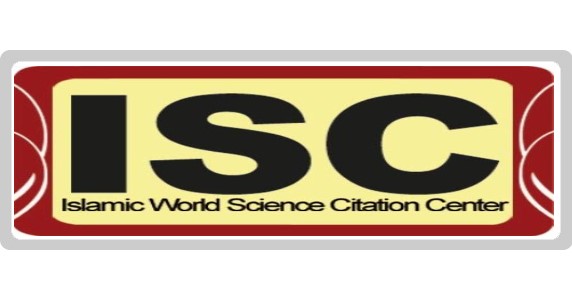Investigating the Current Status of Awe-Inspiring Education Dimensions from the Perspective of Elementary School Teachers and Principals in Khuzestan Province
Keywords:
Surprise, Surprise EducationSurprise Education, Teaching Strategies, School Policy, Elementary School, ValidationAbstract
Purpose: This study aimed to investigate the current status of the dimensions of awe-inspiring education from the perspective of elementary school teachers and principals in Khuzestan Province.
Methodology: The present study is applied in nature and follows a quantitative approach, utilizing a survey method. The statistical population included all principals and teachers working in schools across Khuzestan Province. A multi-stage cluster sampling method was used to select eight regions from the province, resulting in a total sample of 717 teachers and 211 principals.
Findings: The findings of this study indicate that the awe-inspiring education scale and all of its subscales exceed the average with more than 99% confidence. In other words, the current status of awe-inspiring education and its 14 subscales are significantly above average. Additionally, based on the calculated mean scores, the conditions related to the emotional and psychological state during teaching and child-centered education are better than other factors. The data also reveal that the ranking of the dimensions of the awe-inspiring education scale significantly differ from each other with more than 99% confidence.
Conclusion: Over the past decade, the role of awe in education has attracted increasing attention, likely as a counterbalance to the emphasis on efficiency, effectiveness, and standardized test results among students. Therefore, although similar studies have been conducted in Iran, they are not substantial, and it is necessary to recommend that teachers and principals in schools do not overlook the role of awe-inspiring education.
Downloads
References
Bandura, A., & Walters, R. H. (1977). Social learning theory (Vol. 1). Prentice-hall.
Barbezat, D. P., & Bush, M. (2014). Contemplative practices in higher education: Powerful methods to transform teaching and learning. Jossey-Bass.
Bianchi, L. (2014). The keys to wonder-rich science learning. In A. C. K. Egan & G. Judson (Eds.), Wonder-full education: The centrality of wonder in teaching, and learning across the curriculum (pp. 190-203). Routledge.
Carson, R. (1998). The Sense of Wonder. HarperCollins.
D'Olimpio, L. (2020). Education and the arts: Inspiring wonder. In A. Schinkel (Ed.), Wonder, education, and human flourishing: Theoretical, empirical, and practical perspectives (pp. 256-270). VU University Press.
Di Paolantonio, M. (2019). Wonder guarding against thoughtlessness in education. Studies in Philosophy and Education, 38(3), 213-228. [DOI]
Egan, K., Cant, A., & Judson, G. (2014). Wonder-full education: The centrality of wonder in teaching and learning across the curriculum. Routledge. [DOI]
Fleming, D. (2014). An educational leadership perspective: Managing and revealing the DNA of wonder in teaching and learning. In A. C. K. Egan & G. Judson (Eds.), Wonder-full education: The centrality of wonder in teaching and learning across the curriculum (pp. 178-189). Routledge.
Geller, G., Caldwell, M., & Merritt, M. W. (2018). The cultivation of wonder in the premedical learning environment: nurturing ethical character in the early formation of health professionals. Journal of College and Character, 19(3), 229-235. [DOI]
Geller, G., Steinman, C., Caldwell, M., Goldberg, H., Hanlon, C., Wonnell, T., & Merritt, M. W. (2020). Development and validation of a capacity for wonder scale for use in educational settings. Journal of Psychoeducational Assessment, 38(8), 982-994. [DOI]
Gilbert, A. (2013). Using the notion of 'wonder' to develop positive conceptions of science with future primary teachers. Science Education International, 24(1), 6-32. [DOI]
Gilbert, A., & Byers, C. C. (2017). Wonder as a tool to engage preservice elementary teachers in science learning and teaching. Science Teacher Education, 101(6), 1-22. [DOI]
Glăveanu, V. P. (2017). Creativity and wonder. The Journal of Creative Behavior, 53(2), 171-177. [DOI]
Hadzigeorgiou, Y. (2008). Reclaiming the value of wonder in science education. 2nd Summer Institute on Imaginative Education, Delta Vancouver Airport Hotel, Vancouver, Canada.
Hadzigeorgiou, Y. (2012). Fostering a Sense of Wonder in the Science Classroom. Res Sci Educ, 42(5), 985-1005. [DOI]
Hadzigeorgiou, Y. (2014). Reclaiming the value of wonder in science education. In A. C. K. Egan & G. Judson (Eds.), Wonder-full education: The centrality of wonder in teaching and learning across the curriculum (pp. 40-65). Routledge.
Hadzigeorgiou, Y. (2016). Imaginative science education. The central role of imagination in science education. Springer International Publishing. [DOI]
Hadzigeorgiou, Y. (2020). Wonder: Its nature and its role in the learning process. In A. Schinkel (Ed.), Wonder, education, and human flourishing: Theoretical, empirical, and practical perspectives (pp. 185-211). VU University Press.
Hadzigeorgiou, Y. (2022). Students' Reactions to Natural and Physical Phenomena: Documenting Wonder and Engagement with Science Content Knowledge. Interdisciplinary Journal of Environmental and Science Education, 18(1), e2261. [DOI]
Hadzigeorgiou, Y., & Garganourakis, V. (2010). Using Nikola Tesla's Story and Experiments, as Presented in the Film "The Prestige", to Promote Scientific Inquiry. Interchange, 41, 363-378. [DOI]
Hadzigeorgiou, Y., & Judson, G. (2017). Toward more effective storytelling for raising environmental awareness in young students. Journal of Advances in Education Research, 2(1), 12-18. [DOI]
Hadzigeorgiou, Y., & Schulz, R. M. (2019). Engaging students in science: the potential role of 'narrative thinking' and 'romantic understanding'. Frontiers in Education, 4(38). [DOI]
Hakkarainen, P. (2004). Narrative learning in the fifth dimension. Outlines. Critical Practice Studies, 6(1), 5-20. [DOI]
Hein, G. E. (1991). Constructivist learning theory. Institute for Inquiry.
Jørgensen, K. (2016). Bringing the jellyfish home: environmental consciousness and 'sense of wonder' in young children's encounters with natural landscapes and places. Environmental Education Research, 22(8), 1139-1157. [DOI]
Kashdan, T. B., & Silvia, P. J. (2009). Curiosity and interest: The benefits of thriving on novelty and challenge. In S. J. Lopez & C. R. Snyder (Eds.), The Oxford handbook of positive psychology (pp. 367-375). Oxford University Press. [DOI]
L'Ecuyer, C. (2014). The Wonder Approach to learning. Frontiers in human neuroscience, 8, 764. [DOI]
Lindholm, M. (2018). Promoting curiosity? Possibilities and pitfalls in science education. Science & Education, 27, 987-1002. [DOI]
Lindqvist, G. (1996). The aesthetics of play. A didactic study of play and culture in preschools. Early Years, 17(1), 6-11. [DOI]
Marjanovic-Shane, A., Ferholt, B., Miyazaki, K., Nilsson, M., Rainio, A. P., Hakkarainen, P., Pešic, M., & Belanski-Ristic, L. (2011). Playworlds: An art of development. In C. Lobman & B. E. O. Neill (Eds.), Play and performance: Play and culture studies (volume 11) (pp. 3-32). University Press of America.
Morgan, P. F. (2015). A brief history of the current reemergence of contemplative education. Journal of Transformative Education, 13(3), 197-218. [DOI]
Opdal, P. M. (2001). Curiosity, wonder and education seen as perspective development. Studies in Philosophy and Education, 20, 331-344. [DOI]
Pedaste, M., Mäeots, M., Siiman, L. A., Jong, T. D., Riesen, S. A., Kamp, E. T., & Tsourlidaki, E. (2015). Phases of inquiry-based learning: definitions and the inquiry cycle. Educational Research Review, 14, 47-61. [DOI]
Piersol, L. (2014). Our hearts leap up: Awakening wonder within the classroom. In A. C. K. Egan & G. Judson (Eds.), Wonder-full education: The centrality of wonder in teaching and learning across the curriculum (pp. 3-21). Routledge.
Revelle, W. (2021). Psych: procedures for psychological, psychometric, and personality research. Northwestern University, Evanston, Illinois.
Rosseel, Y. (2012). lavaan: An R Package for Structural Equation Modeling. Journal of statistical software, 48(2), 1-36. [DOI]
Schinkel, A. (2017). The educational importance of deep wonder. Journal of Philosophy of Education, 57(1), 538-553. [DOI]
Schinkel, A. (2018). Wonder and moral education. Educational Theory, 68(1), 31-48. [DOI]
Schinkel, A. (2019). Wonder, mystery, and meaning. Philosophical Papers, 48(2), 293-319. [DOI]
Schinkel, A. (2020). Education as Mediation Between Child and World: The Role of Wonder. Studies in Philosophy and Education, 39, 479-492. [DOI]
Schinkel, A. (2021a). Wonder and education: On the educational importance of contemplative wonder. Bloomsbury. [DOI]
Schinkel, A. (2021b). Wonderful education and human flourishing. The Wonderful Education Project.
Trotman, D. (2014). Wow! What if? So what? Education and the imagination of wonder: Fascination possibilities and opportunities missed. In A. C. K. Egan & G. Judson (Eds.), Wonder-full education: The centrality of wonder in teaching and learning across the curriculum (pp. 22-39). Routledge.
Van Manen, M. (2016). Pedagogical tact: Knowing what to do when you don't know what to do. Routledge. [DOI]
Vasalou, S. (2015). Wonder: A grammar. State University of New York Press. [DOI]
Vygotsky, L. S. (1978). Mind in society. The development of higher psychological processes. Harvard University Press.
Washington, H. (2018). Education for wonder. Education Sciences, 8(3), 125. [DOI]
Wolbert, L., & Schinkel, A. (2020). What should schools do to promote wonder? Oxford Review of Education, 1-16. [DOI]
Yin, R. K. (2003). Case study research: Design and method. Sage.
Downloads
Published
Submitted
Revised
Accepted
Issue
Section
License
Copyright (c) 2025 فیروز میردریکوند (نویسنده); مسعود گرامی پور; علی حسینی خواه, مرجان کیان (نویسنده)

This work is licensed under a Creative Commons Attribution-NonCommercial 4.0 International License.










